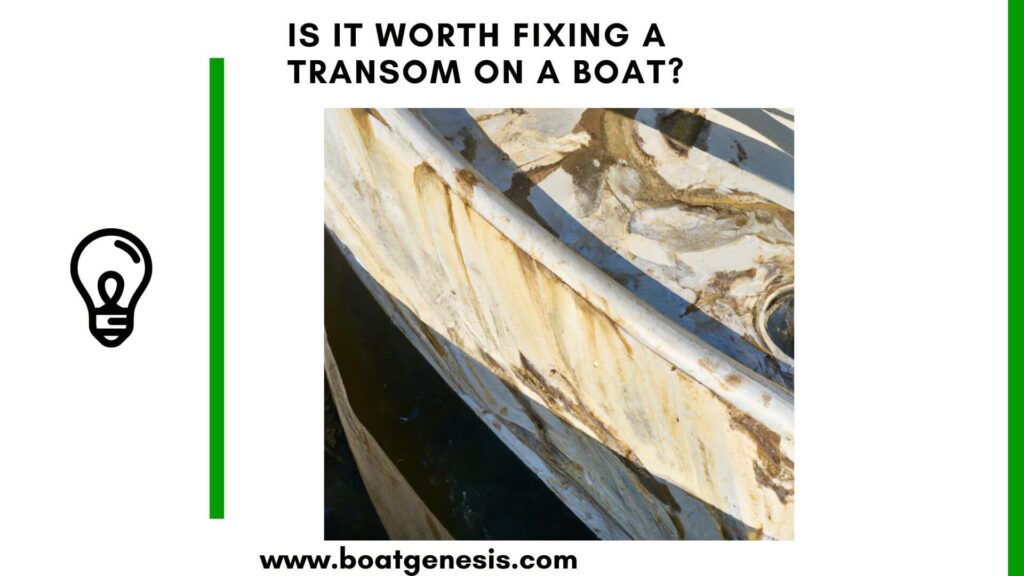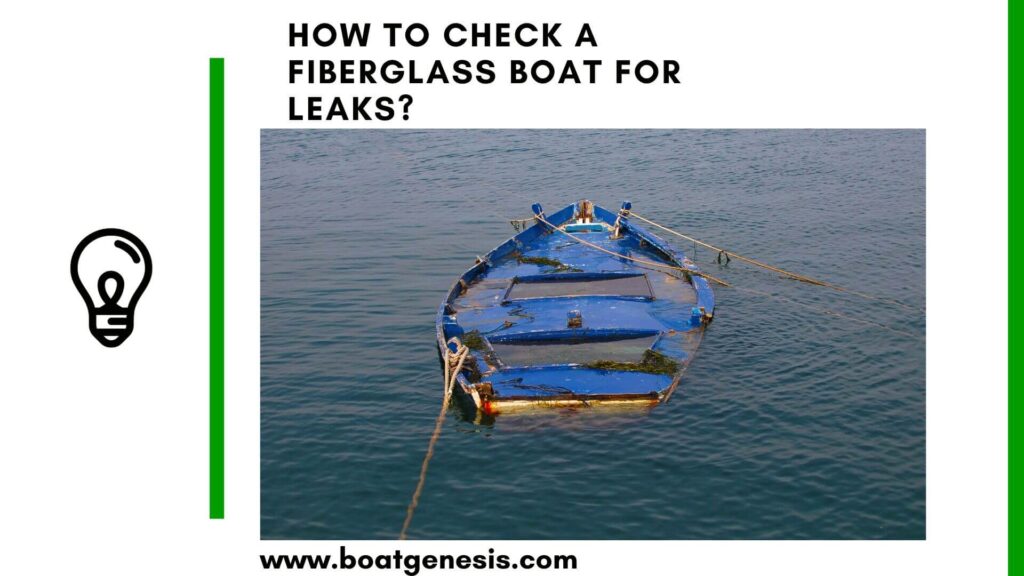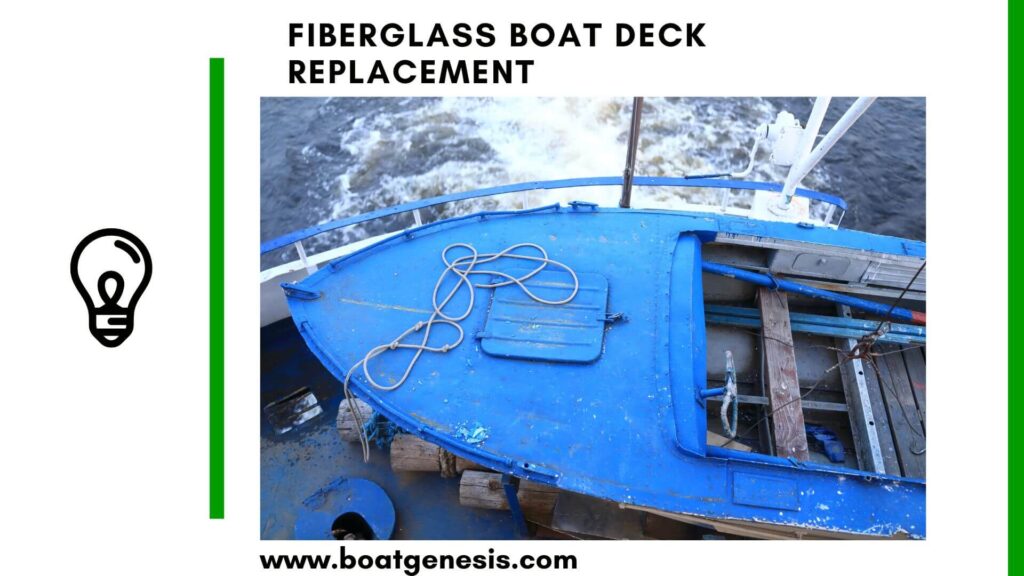The transom, found at the stern of both powerboats and sailboats, is crucial. It supports the engine and other accessories while helping water drain off the back of the boat. When a transom becomes rotted or cracked, boat owners must decide whether to repair it or consider replacing the whole boat.

Deciding whether to fix or replace a damaged transom involves several factors, such as the condition of the boat, your budget, and your own repair skills.
Some might also explore alternatives beyond repairs, while others weigh the benefits of a DIY approach against hiring a professional.
Key Takeaways
- Transoms provide essential support for engines.
- Decide between repair or replacing based on condition and budget.
- DIY and professional repairs each have pros and cons.
So, Is it Worth Fixing a Transom on a Boat?

When considering fixing a transom on your boat, consider its condition and worth. Repair costs should ideally be less than 30% of the boat’s value. If they exceed this, buying a new boat could be more sensible.
For boats with minor issues or sentimental value, repairs might make sense. DIY repairs can save costs and offer a sense of accomplishment. Check out this helpful Fiberglass boat transom repair guide.
Sometimes, just replacing your boat transom does the trick.
Consider lower-cost alternatives like selling the boat “as-is” or modifying the stern. Your decision should balance the repair costs with how much value—monetary or emotional—the boat holds for you. This practical approach ensures you make the best decision for your situation.
Factors to Consider When Deciding on Transom Repair

When deciding on transom repair, several factors should guide your decision. Assess the overall boat condition. If your boat is older, the engine has many hours, or the exterior looks worn, repair costs may outweigh the value. For a clear picture, you need quotes from marine repair experts, as transom repairs, especially those involving fiberglass or woodwork, can be costly.
Understanding the repair costs in relation to the boat’s value is crucial. If repair estimates near or exceed 30% of the boat’s current value, consider replacing the boat unless it holds sentimental value. Even for minor issues like small cracks or splinters, using epoxy fillers can be a more economical choice for those skilled in DIY projects. Options like epoxy resin or penetrating epoxy can address such problems.
If repair expenses seem excessive, consider selling the boat “as-is.” Lower the price and disclose all known issues. For those interested in repair kits, explore fiberglass boat transom repair kits. Such kits may offer a budget-friendly solution for fixing less severe problems.
Alternatives Beyond Repair or Replace

If extensive transom replacement isn’t your choice, consider modifying your boat. Removing weight from the stern can help. Additionally, consult with marine professionals about extending the deck closer to the transom to minimize pressure and wear. Innovative boat edits provide a new path without costly overhauls. Explore boat modification ideas for inspiration.
==>> You should also consider reading about my Fiberglass boat transom repair guide here!
DIY vs. Professional Transom Repair: What’s Best for You?
Deciding whether to repair a transom yourself or hire a professional depends on various factors, such as your skill level, budget, and the condition of your boat. It’s important to weigh these options carefully to ensure the best outcome.
DIY Transom Repair
- Cost-Effective: Repairing a transom on your own can save money. Purchasing materials like plywood, epoxy, and fiberglass can be more affordable than paying for labor.
- Skill Requirements: You need to have some experience with boat repairs and a good understanding of the process. This includes knowledge of sealing plywood with epoxy for protection against water damage.
- Time Investment: DIY repair can take a considerable amount of time. Make sure you’re ready to dedicate several weekends to the project.
For more detailed information on using plywood and the epoxy process, such as applying fiberglass, check out various boating forums.
Professional Transom Repair
- Expertise: Professionals can ensure the repair is done correctly and swiftly, minimizing the risk of further issues.
- Higher Costs: Hiring a professional can be more expensive but may ultimately be worth it if you lack the necessary skills. You can find discussions on whether it’s worthwhile on sites like Boating Forum.
Considerations:
- If you enjoy working on your boat and have the needed skills, a DIY approach could be rewarding.
- In contrast, if your boat is vintage or has extensive damage, professional help could be the best choice to avoid costly mistakes.
Consider the condition of your entire boat. If the rest of the boat is in good shape, then replacing the transom might be worthwhile as new boats can be costly. More information can be found on this Reddit thread.
Whether you decide on a DIY project or professional service, both routes require careful consideration to ensure your boat remains safe and seaworthy.
==>> Also read: Best fiberglass boat transom repair kit
The Bottom Line
Fixing or replacing damaged boat transoms can be expensive and time-consuming. Before deciding, consider using a 30% threshold: if repair costs exceed 30% of your boat’s value, it might not be worth it.
Options:
- Explore lower-cost DIY fixes.
- Sell the boat as-is at a reduced price.
Consult your marine technician, who might suggest ways to modify your boat and reduce strain on the transom. If you’re looking for a new boat, consider visiting a Lund dealer. A new purchase could be more cost-effective and reliable in the long run.

Founder of BoatGenesis, Warren has hands-on experience in fiberglass boat repairs, marine equipment testing, and powerboat building. Learn more about Warren.




